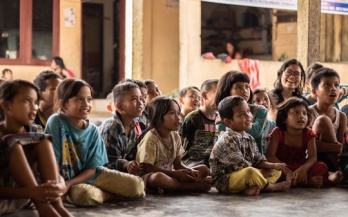This report aimed to quantitatively assess the level of iodine in salt consumed by households in Senegal to provide information on progress made in improving access to iodized salt quality of households following interventions implemented under the Universal Salt Iodization program.
As part of a GAIN funded project on the fortification of cottonseed oil with vitamin A, a baseline study was conducted in Mali to determine the level of retinol serum in the target groups: children aged between 24-59 months and non-pregnant women but of reproductive age.
Vitamin A deficiency remains a leading cause of morbidity and mortality in Indonesian children and women. As a pre-post evaluation, this study assessed consumption of fortified oil, changes in vitamin A intake and retinol status in 2 surveys of women and children.
This report covers evidence of the estimated cost of wheat flour fortification in Tajikistan and suggests a clear economic case for moving forward to fortify flour in Tajikistan with essential micronutrients.
This research provides an overview of the knowledge of nutrition, diet and health issues in the home, and community, and the resulting day to day practices of families and school age children living in Khatlon Province, Tajikistan. The research also looks at the business and policy environment for micronutrient fortification of wheat flour, the main staple food in the Tajik diet, and other staple food vehicles.
To date, there is a lack of data on coverage and utilisation of fortified foods, which impedes the ability to tackle the challenges to fortification in Afghanistan. This survey aimed to fill these gaps by providing information on household coverage and micronutrient contribution of fortified foods among women and children.
Currently, there are limited data available on the performance of the fortification programmes in Burkina Faso since they began. To contribute to filling this critical information gap, a cross-sectional market survey was conducted across eight market hubs strategically selected in different regions of the country.
Micronutrient deficiency is widespread in Kazakhstan among women and children. In 2016, a cross-sectional survey was conducted to update coverage figures of foods fortified according to the national standards and estimate the potential contribution of fortified foods to the micronutrient intake among children under five and women of reproductive age in Kazakhstan.
In Kenya, the Global Alliance for Improved Nutrition (GAIN) is implementing a project to reduce anaemia, iron deficiency and vitamin A deficiency through improved infant and young child feeding practices and MNP intake by integrating distribution of MNP in different existing platforms including: government health facilities and commercial distribution.
The purpose of the survey was to assess the household coverage and potential contribution of fortified foods to the micronutrient intake among women of reproductive age in two states: Kano and Lagos.










